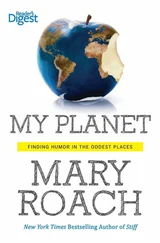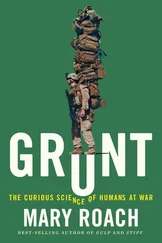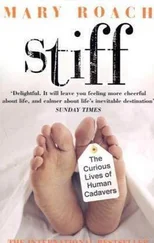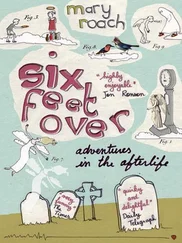You can’t blame people for being confused. The careers of Ham and Enos—the chimpanzees who, in 1961, flew the dress rehearsals for the first U.S. suborbital (January) and orbital (November) flights were in some respects not all that far off from the careers of Alan Shepard and John Glenn. The chimps and the two astronauts who followed them into space did not train together, but they could have. They spent time in the same altitude chambers and tried out weightlessness on board the same parabolic airplane flights, rode the same spinning centrifuges and vibration tables to get used to the noise and shudder and G’s of liftoff. Come the big day, astrochimp and astronaut would suit up and ride out to the gantry in the same Airstream trailer.
For both species, piloting duties were light to nonexistent. Mercury capsules, as Ham’s veterinarian Bill Britz says, “were not flying machines, they were bullets.” Shoot them up, cue the parachutes, watch them come back down. [42] Piloting could be done by the astronauts, via directional thrusters, but it didn’t need to be. The capsule could be flown on autopilot and operated from the ground in, to quote astronaut Mike Collins, “chimp mode.”
Speaking of both man and chimp, Britz said, “They were organisms placed on board.” The science of the Mercury program was an extension of the V-2 and Aerobee and parabolic flights that led up to it. Aerospace biologists had established that humans can function for a few seconds without gravity. But what about an hour, a day, a week? “People ask, Why ?” says Britz of the era of the spacefaring chimp. “Mary, we just didn’t know.” What were the longer-term effects of space travel—not only of weightlessness, but of cosmic radiation? (High-energy atomic particles have been zinging through space at ferocious speeds since the Big Bang. Earth’s magnetic field protects us by deflecting cosmic rays, but in space, these invisible bullets smash unimpeded through cells, causing mutations. It’s serious enough that astronauts are classified as radiation workers.)
Just as the Alberts laid the groundwork for the Mercury fliers, Ham and Shepard and the rest would pave the way for the Gemini astronauts. And on it went. Gemini paving the way for Apollo. Six-month space station missions paving the way for the eventual long haul to Mars. Each space program along the way provides opportunities for planetary science, but in the grander scheme of space exploration, every program is fundamentally practice and prep for longer, farther trips to come.
Zero gravity still had NASA spooked. “The big bugaboo was weightlessness,” said John Glenn in a 1967 Associated Press interview. “Many ophthalmologists thought the eye would change its shape and that this would change the vision, so that maybe the man in space would not be able to see at all.” That is why, if you’d looked inside Glenn’s capsule, you’d have seen a scaled-down version of the classic Snellen eye chart taped to the instrument panel. Glenn had been given instructions to read the chart every twenty minutes. A color blindness test and a device to measure astigmatism were also on board. I used to hear about Glenn’s historic flight and think, “Man, what was that like—being the first NASA astronaut to orbit the Earth?” Now I know. It was like visiting the eye doctor.
An overabundance of gravity—the multiple G’s of launch and reentry—also had NASA concerned. An astronaut needed to be able to reach the instrument panel in case something went wrong. If his outstretched arm weighed 70 pounds instead of 9, would he have the strength to raise it? This is why Ham (and later Enos) spent weeks learning a routine that would have them reaching over to an instrument panel and pulling levers throughout their flights. The lever-pulling also let researchers keep track of any cognitive ebbs during the chimps’ flights. They wanted to be sure that zero gravity, combined with some yet-to-be-discovered X factor, wouldn’t disorient a space flyer or slow his reaction time.
Given that the Mercury fliers were gold-standard, swinging-dick military test pilots, the concern did not sit well. These men hadn’t been in space, but they’d spent enough time on the doorstep to feel confident they’d be fine. As test pilots, they’d endured G forces during climbs and pullouts that were higher and more sustained than any they’d have to deal with on a Mercury flight. They didn’t worry about their abilities; they worried, if anything, about their ride. As of two months before launch, the guidance system of the Redstone rocket that would carry Shepard’s capsule into space had been misbehaving, and there were seven last-minute modifications to the hardware that hadn’t been tested in flight. That’s another reason NASA sent chimpanzees up first. (They would come to regret the caution. Three weeks before Alan Shepard launched, cosmonaut Yuri Gagarin became the first man in space.)
Ham’s flight implied—in a widely publicized manner—that the astronaut, America’s hero, was no more than a glorified chimp. “To be preceded by a chimpanzee was just a blow to their ego,” Bill Britz told me. The astronauts would surely have preferred another quiet dummy launch. In the months prior to Ham’s flight, a capsule was launched carrying a “crewman simulator” [43] The simulated astronaut is a tradition dating all the way back to the Sputnik era, when the Soviets flew test runs with a mannequin they called Ivan Ivanovich and, sometimes, recordings to test voice transmissions. A tape of a person singing was originally proposed, so as to make clear to Western listening posts that it wasn’t a spy. Someone pointed out that this would generate rumors of a cosmonaut spy gone mad. The recording was switched to choral voices, as even the most gullible Western intelligence man knew you couldn’t fit a choir in a Korabl-Sputnik satellite. A voice reading a Russian soup recipe was thrown in for good measure. The simulated astronaut named Enos orbited with a voice-check tape recording that said, “Cap com, this astro is. Am on the window and the view is great…,” prompting President Kennedy to announce to the world, “The chimp took off at 10:08. He reported that everything is perfect and working well.” No doubt generating KGB rumors of a U.S. president gone mad.
that “breathed,” consuming oxygen and producing carbon dioxide to test the cabin sensors. The same insinuations could be made about a man whose job could be done by a dummy, but the press didn’t cover dummy flights the way they covered chimp flights. The banana pellet dispenser was gone when Shepard and Glenn climbed on board, but the stigma remained. As fighter jock Chuck Yeager, the rightest of stuff, famously put it, “I wouldn’t want to have to sweep monkey shit off the seat before I climbed into the capsule.”
Though Ham and Enos and their alternates lived and trained in trailers alongside the astronauts’ live-work quarters at Kennedy Space Center’s famous Hangar S, Britz says he can’t recall talking to Alan Shepard more than once or twice. “We didn’t mingle much.” Enos’s veterinarian Jerry Fineg agrees: “They didn’t want to recognize the fact that we were there.” Chimp jokes were poorly received. Britz told me a story about a placard posted on the wall of the van that both astrochimp and astronaut rode to the launch pad. “They had Alan Shepard’s trajectory plotted on [it]. We very carefully plotted Ham’s trajectory higher and farther.” (Owing to a malfunction, Ham flew 42 miles higher than planned.) “I’m telling you, it really pissed some people off. That thing disappeared in a minute.” Mercury launch pad director Guenter Wendt once reprimanded Shepard by threatening to replace him with one of those guys who works for bananas. Shepard, the story goes, threw an ashtray at his head.
Читать дальше












